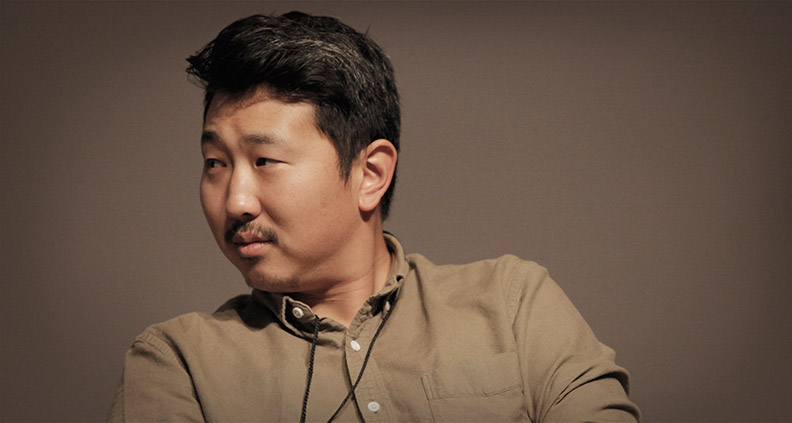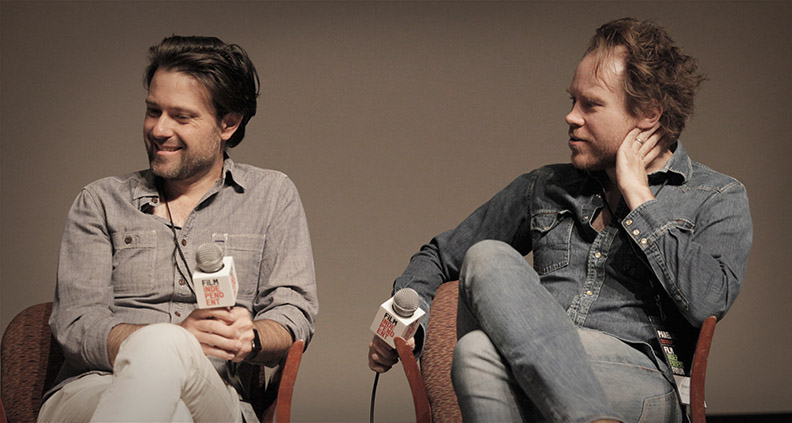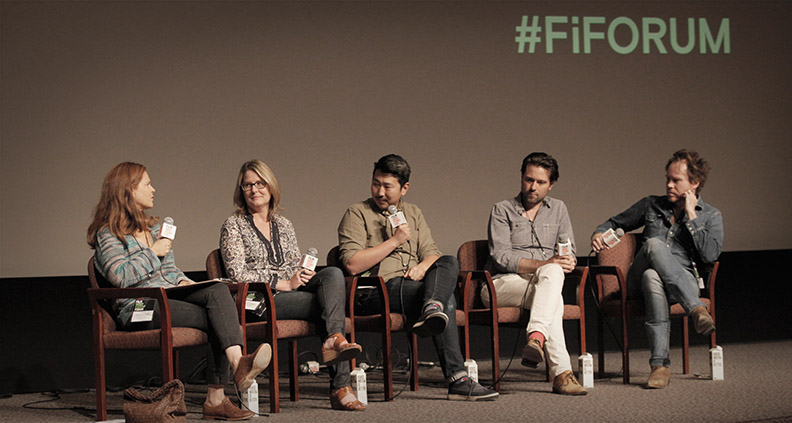Watch the entire panel here:
After showing brief clips from each film, Roughan dove directly into the nuts-and-bolts of production: “How did you think you were going to get financed versus how you actually did?” she asked. For Ahn, whose queer-themed coming-of-age tale set amid LA’s Koreatown district premiered to rave reviews at Sundance in January, the money question was one of recalibrating expectations. “When I started, I think we thought we could just find one investor,” he said. The reality ended up being more piecemeal, with multiple investors coming onboard in addition to launching an intensive Kickstarter campaign. “Kickstarter is its own mini-production,” said Thomas, who laid out how the Spa Night team had a strict calendar of action items to support the crowdfunding effort. Ahn stated that the Kickstarter eventually netted $62,000—a fair return on easily $62,000 worth of effort. “We set it up where we had to succeed,” Thomas added. Spa Night was also supported by Film Independent’s Film LA grant, which provided a blanket two-week permit to film in up to 10 location. (Learn more about the grant here.) Too Late’s road to not-quite riches was much different. The unconventionally structured film, which unfolds over the course of five separate, continuous 22-minute takes shot on 35mm, came together slowly over the course of several years. Initially, only one of the five long takes was produced, which served as a proof-of-concept to drum up support from other investors. It was this proof-of-concept that attracted Miller. “I had started a production company with the business model of doing branded content and commercials to cover overhead,” he explained. “I was introduced to the script by [actor] Rider Strong [and was] intrigued by the concept.” Ultimately the film, which began filming in 2012, played at festivals in 2014 and was only released theatrically in 2016. Roughan changed the subject to casting. For Too Late, securing lead actor John Hawkes was a matter of persistence. “I had his [Hawkes’] number, but I just filed it away,” said Hauck, who explained that every role in the film was designed specifically for someone who he had tangible access to, no matter how spurious. After using bourbon to “work up the nerve” to call Hawkes directly after initially being rebuffed by the actor’s representation, Hauck told the Academy Award nominated actor, “I need to hear it [the rejection] from you.” After some back-and-forth, Hawkes was officially onboard. For the Spa Night team, casting required a multi-pronged approach, including hiring a Korean-language casting director, roping in Ahn’s family friends and even canvasing gay Asian events at local West Hollywood nightclubs. It paid off—Spa Night lead Joe Seo claimed a Special Jury Award at Sundance for his breakthrough performance. Moving on to the actual film shoots, Roughan asked each of the panelists what their strategy was for flying under the radar. “We had all agreed that we were going to try to leave a small footprint,” said Thomas. That “small footprint” resulted in the production team assuming “double, triple, quadruple duties.” Both films also used non-union crews. One place where Spa Night didn’t skimp, though, was permitting. “We had to be really conscious of that,” said Thomas. “I wanted to be safe and not run the risk of being shut down.” For Too Late and its unconventional filming approach, permits were likewise a must. Because the film consisted solely of five long takes, being shut down and forced to move on to cover other material was out of the question. “There’s nothing else to shoot,” observed Hauck. Luckily, Too Late’s odd structure was also a benefit. Because the actual shooting of the film was confined to five days (one for each segment of the film) Huack said, “we know we’d be done shooting before they [adversarial union reps] could shut us down.” But at the end of the day, each of the producing/directing teams agreed that the most important part of shooting a low-budget feature—in LA or anywhere else—is getting collaborators both above- and below the line onboard with the filmmaker’s vision. “Treat the crew professionally, even if you’re non-union,” advised Hauck. “It’s all about creating a culture people want to be a part of.” And don’t be afraid to improvise. Said Ahn, “we were pulling every trick I learned in film school to make the scope of the film feel big.” https://www.youtube.com/watch?v=sfSRGcrPCYY The 2016 Film Independent Forum is happened from October 21-23 at the Directors Guild of America in Los Angeles. To see more from this year’s panels and events, be sure to subscribe to our YouTube channel and follow us on Twitter and Facebook. Not a Member of Film Independent yet? Become one today. The 2016 Film Independent Forum is supported by Premier Sponsors Directors Guild of America, Loyola Marymount University School of Film and Television and SAGindie, with Principal Sponsors Brandwood Global, Montana Film Office, and The Virginia Film Office.


